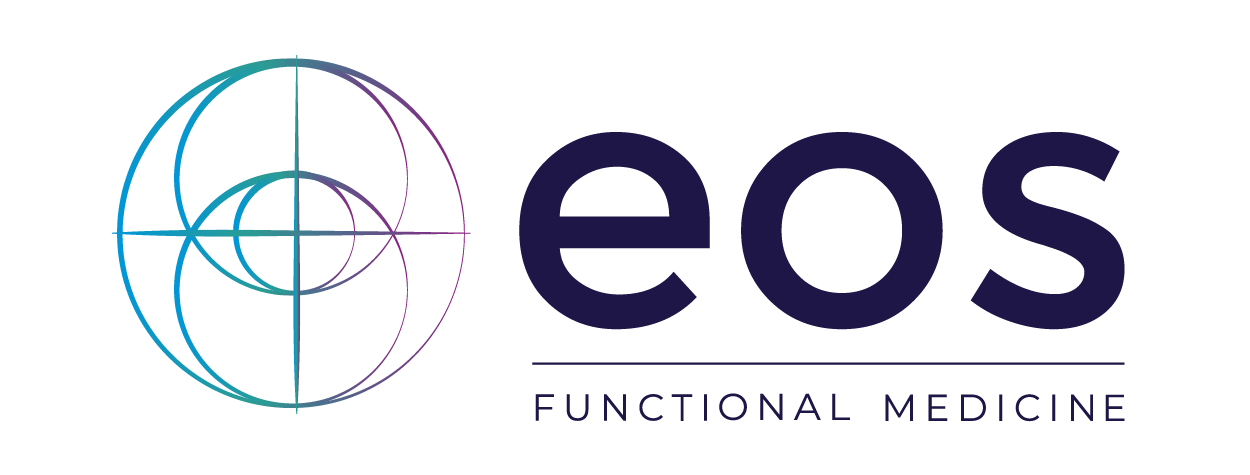
Normally, our body needs sugars to generate the energy required for the functioning of different organs. However, its excess can trigger metabolic diseases such as dysglycemia. We tell you what it is and how to mitigate it, all from the approach of the EOS CENTER in Functional Medicine.
What you'll see in this article
What is dysglycemia?
Dysglycemia is an alteration in sugar metabolism, a difficulty processing sugar in the body. Its main cause lies in poor diet and a sedentary lifestyle, which is why it is completely preventable and must be treated by paying attention to the habits that trigger it. Dysglycemia can manifest itself in two ways and both give rise to different symptoms, which we present here:
Insulin resistance
When we eat carbohydrates, our pancreas must generate insulin so that these, converted into glucose, enter the cells and are processed and used by the body. However, when we consume excess carbohydrates for long periods, the pancreas produces much more insulin to compensate for the imbalance, and our body begins to generate insulin resistance. Elevation of insulin and blood glucose for a long time alters other hormones, the immune system, and many other systems.
Symptoms of insulin resistance
These are some symptoms that can help you detect if you suffer from insulin resistance:
- You feel tired or sleepy after meals.
- You need to eat sweets during the day.
- Eating sweets does not stop you from wanting to eat more sweets.
- You need a sweet after meals.
- The circumference of your abdomen is greater than that of your hips.
- You urinate frequently.
- Increased thirst and hunger.
- You have difficulty losing weight
Functional hypoglycemia
Hypoglycemia is a condition in which the blood sugar (glucose) level is lower than normal. In this case, the process is reversed: the pancreas produces much more insulin than necessary, leading to low blood glucose levels. This is not good for the body since the marked drop in glucose causes stress, damaging many organs, including the brain.
Symptoms of functional hypoglycemia
These are some symptoms that can help you detect if you suffer from functional hypoglycemia.
- You need to eat sweets during the day.
- You get irritable if you skip meals.
- You need to drink coffee to stay energized.
- You get dizzy if you skip a meal
- Eating relieves low energy
- You often feel nervous or shaky
- You often become short-tempered, nervous, agitated.
- Your memory worsens when you haven’t eaten for a long time.
- Blurry vision.
How to prevent dysglycemia?

The best way to prevent dysglycemia is to avoid high blood sugar spikes, so it is important that you do not eat excess carbohydrates and that you avoid consuming them without accompanying them with other foods such as proteins or fats. These are some recommendations that you can take into account:
- Although it may seem strange, the order in which we consume food impacts the body’s response to it. Therefore, try to eat vegetables first, which, although they are carbohydrates, have a high fiber content that helps regulate and avoid sugar spikes.
- Eat foods such as reheated rice and potatoes, as this converts starch into resistant starch, thus avoiding blood sugar and insulin spikes. Prepare the food, put it in the refrigerator, and then heat it again before eating.
- Always prioritize good quality carbohydrates with more fiber, such as vegetables, arracacha, sweet potatoes, or Creole potatoes. Avoid processed foods which tend to have large amounts of simple carbohydrates.
- Exercise is one of the best alternatives. The most recommended physical activities are those that include weight lifting or high-intensity intervals (HIIT), although any exercise you do will positively impact your health.
How to treat dysglycemia?
If you already suffer from any of the dysfunctions in which dysglycemia occurs, keep in mind that there are particular recommendations for each case. If you have been diagnosed with insulin resistance, try to eat two to three meals a day to avoid insulin spikes.
If you are also obese or overweight, consume your carbohydrates in the form of complex carbohydrates and only once a day, preferably at lunch. If this is not your case, you can consume them in your main meals. Estimate them to be approximately a quarter of your plate.
If your dysglycemia presents as functional hypoglycemia, you can eat more than three meals a day, maintain an eating schedule, and, as in the previous case, not eat carbohydrates alone but eat them in meals that include vegetables, proteins, and healthy fats such as the avocado.
Don’t forget that prevention is vital. At the EOS Center, we specialize in identifying your body’s needs, helping you make the best decisions for your health, and helping you implement healthy lifestyle habits, all from the perspective of functional medicine.

